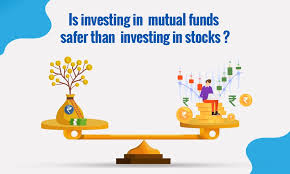February 27, 2025
Are you confused between Mutual Funds and ETFs? In 2025, investors are looking for cost-effective, high-return, and tax-efficient investment options. This guide breaks down the key differences, advantages, and best mutual funds & ETFs to help you make the right choice

✔ Professional Management – Fund managers handle stock selection & portfolio balancing. ✔ Great for Passive Investors – You don’t need to monitor the market daily. ✔ Automated Investments – SIPs (Systematic Investment Plans) help in disciplined investing.
❌ Higher Fees – Actively managed funds have higher expense ratios. ❌ Less Tax Efficient – You pay capital gains tax when fund managers rebalance the portfolio. ❌ Limited Trading Flexibility – Can only be bought or sold at the end of the trading day.
✔ Lower Cost – Many ETFs have an expense ratio below 0.10%. ✔ Tax Efficiency – ETFs minimize capital gains tax compared to mutual funds. ✔ Instant Liquidity – You can buy/sell ETFs anytime like a stock. ✔ Diversification – ETFs track indices like the S&P 500, reducing risk.
❌ Requires Active Monitoring – Since ETFs trade like stocks, investors need to watch price movements. ❌ Trading Fees – Some platforms may charge fees when buying/selling ETFs. ❌ Not Ideal for Small, Regular Investments – Unlike mutual funds, ETFs don’t allow automatic SIPs.
✔ Vanguard 500 Index Fund (VFIAX) – Best for Long-Term Growth ✅ Expense Ratio: 0.04% ✅ Tracks the S&P 500 Index
✔ Fidelity Contrafund (FCNTX) – Best Actively Managed Fund ✅ Expense Ratio: 0.85% ✅ Focuses on growth stocks like Apple, Microsoft, and Amazon
✔ Schwab U.S. Dividend Equity Fund (SCHD) – Best for Dividend Income ✅ Expense Ratio: 0.06% ✅ Dividend Yield: 3.5%
✔ SPDR S&P 500 ETF (SPY) – Best for Broad Market Exposure ✅ Expense Ratio: 0.09% ✅ Trades like a stock but tracks the S&P 500
✔ Invesco QQQ ETF – Best for Tech Growth ✅ Expense Ratio: 0.20% ✅ Tracks the Nasdaq-100, including Apple, Google, and Tesla
✔ Vanguard Total Bond Market ETF (BND) – Best for Conservative Investors ✅ Expense Ratio: 0.03% ✅ Invests in high-quality bonds for stability